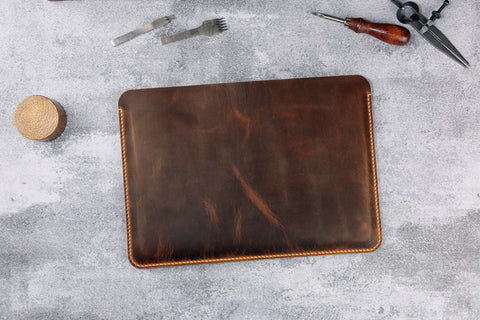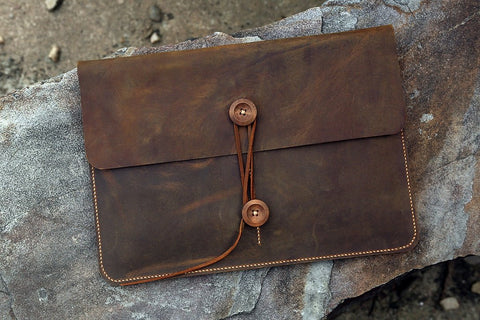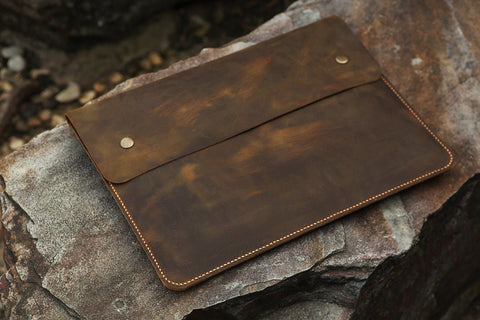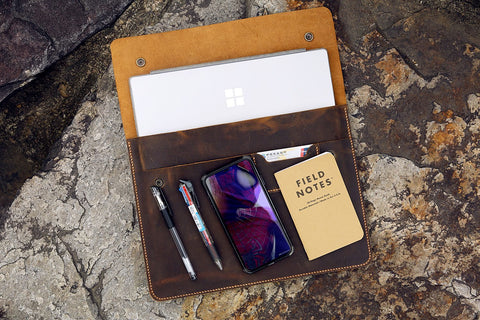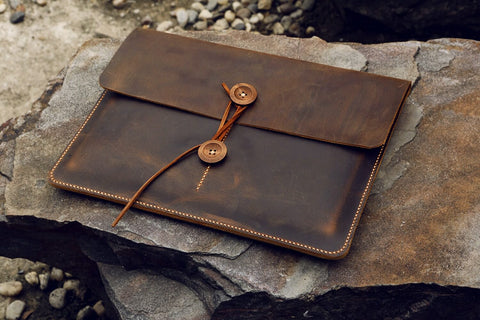Patent Leather
Introduction:
Patent leather is a special material. This article takes you into the world of patent leather and introduces the definition of patent leather, what is patent leather, usage scenarios of patent leather, items that can be made (including patent leather shoes, boots, etc.), and the production process of patent leather. , and finally made a comparison between patent leather and genuine leather, and the difference between patent leather and bright leather.
What is patent leather?
Patent leather is a type of leather that has been given a high-gloss, shiny finish through the application of a coating. Traditionally, this coating was made from linseed oil-based lacquer, but modern patent leather often uses synthetic coatings such as acrylic or polyurethane. The process creates a smooth, glossy surface that is distinctive and visually appealing. Patent leather is known for its reflective shine, smooth texture, and water-resistant properties, making it a popular choice for a variety of fashion items such as shoes, handbags, and accessories, as well as in furniture and automotive interiors. The coating not only enhances the leather's aesthetic appeal but also provides a degree of protection against wear, scratches, and moisture.

The definition, advantages and disadvantages of patent leather
Patent leather is not only aesthetically pleasing but also relatively durable and easy to clean, making it a popular choice for a wide range of applications, including footwear, handbags, and other fashion accessories. Its waterproof qualities and ease of maintenance, combined with its luxurious appearance, have made it a favored material in the fashion industry for centuries.
It's worth noting that while patent leather offers numerous advantages, it also has some limitations. The material can be prone to creasing and cracking if not cared for properly. Moreover, the high-gloss finish may not be desirable for all designs or preferences, limiting its use in certain contexts.
Advantages of Patent Leather
- Aesthetic Appeal: Its glossy finish provides a luxurious and formal appearance, making it a popular choice for high-end and fashion products.
- Ease of Maintenance: The smooth, sealed surface of patent leather is easy to clean and maintain, often requiring just a simple wipe to remove dirt and stains.
- Durability: When properly maintained, the coating on patent leather can protect the material from scratches and scuffs, extending the product's lifespan.
- Versatility: Patent leather is used in a variety of products, from footwear and accessories to upholstery, demonstrating its versatility in design and application.
Disadvantages of Patent Leather
- Creasing and Cracking: With repeated wear, patent leather can develop creases and cracks in the coating, which are difficult, if not impossible, to repair.
- Breathability: The protective coating on patent leather reduces its breathability, which can make products made from it less comfortable in warm conditions.
- Temperature Sensitivity: Patent leather can be sensitive to extreme temperatures, with high heat potentially causing the coating to become tacky and cold temperatures making it overly rigid.
- Limited Repairability: Damage to the coating of patent leather is often permanent, as the glossy finish is difficult to replicate or restore through conventional repair methods.
The origins of patent leather
The origins of patent leather can be traced back to the early 19th century, with the first patent for a process to create this shiny, durable material being granted in 1818. The inventor, Seth Boyden, an American from Newark, New Jersey, developed the process that involved treating the leather with a linseed oil-based lacquer, giving it a high-gloss finish that was both visually appealing and protective.
Before the invention of the modern patent leather process, leather was often treated with oils and varnishes in an attempt to make it more durable and water-resistant. However, these methods did not produce the same high-gloss finish and were not as effective in protecting the leather.
Boyden's process involved coating the leather with several layers of linseed oil-based lacquer, which was then allowed to dry slowly. This method not only created a glossy surface but also made the leather more resistant to water and wear. The invention quickly gained popularity, and patent leather became a sought-after material for a variety of uses, including shoes, belts, and other fashion accessories.
Over time, the process of making patent leather evolved. The linseed oil lacquer was eventually replaced by more modern and efficient coatings, such as acrylic and polyurethane, which provide a similar glossy finish but with improved durability and less environmental impact.
Today, patent leather remains a popular material in the fashion industry, prized for its distinctive shiny finish and elegance. Its application has expanded beyond accessories to include furniture, automotive interiors, and even protective outerwear, demonstrating the versatility and enduring appeal of this innovative material.
Application of patent leather
Patent leather's glossy, high-shine finish has made it a favorite in the fashion world and beyond, extending its reach into a variety of applications that capitalize on its distinctive appearance and practical attributes. This material is commonly chosen for fashion accessories, such as patent leather purse,elegant handbags, wallets, belts, and gloves, where its lustrous surface adds a touch of sophistication. In footwear, patent leather is a staple for patent leather shoes , patent leather boots , patent leather pumps and patent leather loafers . Among them, black patent leather shoes , red patent leather shoes are the most popular,and patent leather jordan 1 、 patent leather loafers ,patent leather sneakers,are also highly favored by customers.
Beyond accessories and shoes, patent leather finds its way into the clothing sector, lending its unique sheen to jackets, skirts, and pants for those looking to make a fashion statement.
The use of lacquer leather is also divided into males and females, mens patent leather shoes are more popular than women, patent leather loafers womens are much more used.
patent leather shoes womens and patent leather shoes for men are both well received.
The applications of patent leather extend into the realm of home decor and furniture, where its durability and ease of maintenance are prized for upholstery on chairs, sofas, and ottomans, especially in designs aiming for a sleek, contemporary aesthetic. The automotive industry also embraces patent leather, utilizing it to enhance the interiors of luxury vehicles with its luxurious appearance on seats, dashboards, and steering wheels.
In the realm of musical instruments, patent leather adds visual appeal to items like drums and accordion straps, showcasing the material's versatility beyond traditional uses. Even in sporting goods, patent leather makes an appearance in high-end equipment such as boxing gloves and basketballs, chosen for its premium look and feel. Furthermore, the material's historical significance is evident in its use for luxury or decorative book bindings, where it contributes both beauty and durability.
Patent leather's broad range of applications is a testament to its unique blend of aesthetic appeal and functional benefits, making it a sought-after material across diverse industries. From adding elegance to everyday items to enhancing the luxury of high-end products, patent leather continues to be a versatile choice for designers and manufacturers looking to combine style with substance.

Application of patent leather
Patent leather jordan 1
The Patent Leather Jordan 1 is a variation of the Air Jordan 1, distinguished by its use of patent leather, which gives the shoe a glossy, high-shine finish. Introduced in the mid-1980s, the Air Jordan 1 was originally designed for basketball performance and quickly transcended its athletic origins to become a staple in fashion and urban culture. The addition of patent leather Jordan 1's upper brings a distinctive aesthetic to the classic silhouette, enhancing its visual appeal and offering greater durability and ease of maintenance. This model retains the original's essential features, such as the perforated toe box for breathability and Air-Sole units for cushioning. Available in various colorways, the Patent Leather Jordan 1 appeals to both sneaker collectors and fashion enthusiasts looking for a stylish and iconic footwear option.

The Patent Leather Jordan 1
Black patent leather shoes
Black patent leather shoes are renowned for their sleek and polished appearance, making them a classic choice for formal attire and special occasions. Crafted from leather that has been finished with a high-gloss varnish, these shoes reflect light, giving them a distinctive mirror-like shine. The shiny finish not only enhances their visual appeal but also provides a protective layer, making the shoes relatively easy to clean and resistant to water and stains.
Commonly available in styles such as oxfords, loafers, and dress pumps, black patent leather shoes are a staple in both men's and women's wardrobes. They are particularly popular in formal settings like weddings, black-tie events, and business meetings, where they complement suits and evening wear with an added touch of sophistication. Despite their formal connotation, black patent leather shoes can also be styled in more casual ways, paired with jeans or other relaxed attire to elevate an everyday look. Their versatility and timeless appeal make them an essential footwear choice for anyone looking to add a refined edge to their outfit.

Black patent leather shoes
Patent leather loafers
Patent leather loafers are a popular choice for those seeking a sophisticated and polished footwear option. Known for their glossy, high-shine finish, these loafers are made from patent leather, a type of leather treated with a varnish or lacquer to achieve its reflective surface. This unique finish not only adds an elegant aesthetic appeal but also enhances the shoe’s durability and resistance to moisture and dirt.
Typically designed as slip-on shoes, patent leather loafers feature a low, laceless profile, making them both comfortable and convenient for quick on-and-off wear. They often include design elements such as a moccasin toe, metal buckle, or tassel, adding character and style to the classic silhouette. Ideal for formal occasions and professional settings, patent leather loafers can also transition smoothly into more casual ensembles, making them a versatile addition to any wardrobe. Their sleek design and durable construction make patent leather loafers a timeless investment in style and comfort.

Patent leather loafers
Patent leather swimsuits
Patent leather swimsuits are not particularly rare clothing among various types of pictures. It first appeared in Japanese DC stockings decades ago. It is very dazzling and has a metallic texture, bringing strong stimulation and temptation. Whether it is gold, silver, yellow, blue, or purple, it creates a unique metallic luster. When wrapped around the model's soft female body, it immediately shows a visual temptation with strong contrast.

Patent leather swimsuits
The process of making patent leather
The process of making patent leather begins with the selection of high-quality leather, usually from calf or lamb, which is then tanned and treated to create a smooth, fine grain. Once the leather is prepared, it undergoes the crucial step of coating. The initial coatings are applied and then the leather is stretched and smoothed to ensure an even application. After the first few layers, the leather may be heated or left to dry naturally, depending on the specific properties desired in the final product. This coating process is repeated multiple times to build up a thick, durable, and glossy finish.
The difference between patent leather and bright leather
Many unscrupulous merchants on the market now often sell bright leather as patent leather. In fact, patent leather and bright leather are very different. Bright leather is actually the leather that is colored and then polished to make the product more beautiful. Although it is also It has a certain degree of moisture resistance, but its feel is still not as good as patent leather, and the luster of patent leather is very natural. PU is artificial leather, not real leather. Simply put, "PU is polyurethane, a type of artificial leather." Secondly, PU is an artificial synthetic material that has the texture of genuine leather, is very strong and durable, and is cheap. In fact, patent leather
The effect will appear only after certain chemical treatment is done on the original leather. As we all know, the most important feature of patent leather is: brightness. So when you find that your bag is stained and not shiny, remember: do not wipe it with a wet cloth or brush it with a brush. If you use a damp or semi-wet cloth for a long time, the surface of the patent leather will lose its luster and dry out, shortening the life of the bag. Brushing with a brush will directly damage the surface of patent leather. You must know that the biggest fear of patent leather is scratches, which is an irreparable "fatal injury" to patent leather shoes.
The difference between patent leather and genuine leather
Finish and Appearance:
- · Patent Leather: This is characterized by its glossy, mirror-like finish, which is achieved through applying a clear coating, typically a plastic or lacquer, over the leather. This coating is what distinguishes patent leather from all other types, giving it a very smooth, shiny surface.
- · Genuine Leather: Often referred to as real leather, it maintains the natural texture of the animal hide, including any imperfections. The term "genuine leather" can be somewhat broad, but it generally indicates that the leather retains many of its original characteristics and is not covered with any synthetic layers. Its finish can range from matte to lightly polished, depending on how it's treated.
Texture and Flexibility:
- Patent Leather: The additional coating on patent leather not only adds gloss but also tends to make the leather stiffer. This can limit its use in products where flexibility is essential.
- Genuine Leather: It tends to be more flexible and breathable compared to patent leather. The extent of flexibility and softness depends on the type of tanning and finishing processes used.
Durability and Maintenance:
- Patent Leather: While the glossy finish is durable against scratches and easy to clean (typically needing just a wipe to remove dirt), it can be susceptible to cracking and creasing over time, especially in areas that bend frequently.
- Genuine Leather: It requires more maintenance, such as regular conditioning, to prevent drying out and cracking. However, genuine leather is often prized for its ability to develop a patina over time, which many consider enhancing its aesthetic value.
Applications:
- Patent Leather: Frequently used in fashion accessories like shoes, handbags, and belts, especially in formal or decorative items due to its shiny appearance.
- Genuine Leather: Used in a broader range of products including furniture, clothing, footwear, and more, valued for its durability, comfort, and aesthetic appeal that ages well.



